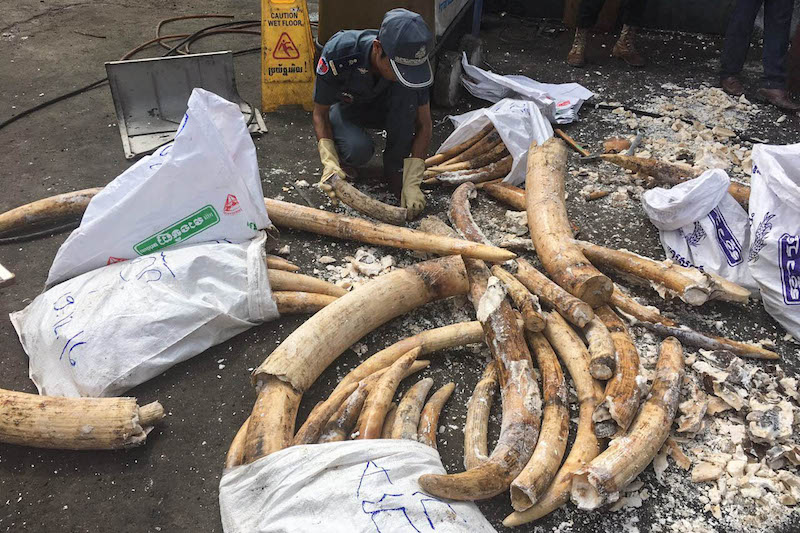Customs officials continued on Monday to slowly unpack a haul of hollowed-out logs from Africa crammed with endangered animal parts, initially revealing more than 140 ivory tusks and pieces of ivory valued at millions of dollars.
John Guiry, CEO of Royal Railways, the line that carried the freight to Phnom Penh, said he saw the tusks of nearly two dozen elephants on Monday in just the first 20 centimeters of wood that officials cut away.

“When you see it yourself, it really hits you on the head,” Guiry said. “I saw 22 dead elephants on Monday—you know, there are two tusks per elephant—in 8 or 9 inches of wood.”
With an average weight of 30 kg per elephant tusk, the ivory uncovered so far would be worth nearly $9 million at Chinese ivory prices reported earlier this year in The Guardian.
Some 20 officials—military police, U.S. Embassy staff, Forestry Administration officials and members of the NGO Wildlife Alliance —arrived at the Phnom Penh dry port on Monday to watch the process and guard the haul.
Customs officials could not say how many animal parts were packed into the three logs shipped to Cambodia from Mozambique via Singapore. When they finished work on Monday evening, only one of the logs had been fully unpacked.
The second contained tiger bones, elephant tails, pangolin scales and ivory similar to the first. The third had yet to be opened.
“Right now, we are only cleaning the evidence. We haven’t counted yet,” said Un Vannarith, deputy chief of the Phnom Penh Forestry Administration cantonment.
Videos shared by Mr. Vannarith show more than 140 elephant tusks and ivory pieces arrayed inside the port along with pangolin skins being stirred in vats of warm water to remove the wax in which they had been sealed.
The haul will be confiscated as state property, he said.
With investigations ongoing, officials were tight-lipped about who was coordinating the haul’s transit or who was believed to be its final recipient. Mr. Vannarith said that the timber itself—logs of African Beng wood 250 centimeters long and 60 centimeters wide—was destined for Cambodia, but he was not sure for whom.
The animal parts were likely meant for China, he said.
“It is an import. It is in transit. Its final destination is China,” said Soeun Sovann, director of the Forestry Administration’s department of legislation and law enforcement.
Mr. Guiry, however, said that customs officials were pursuing a definite suspect. “They know the shipping company; they know the cosigner,” he said. “They are after someone.”
Guardian investigations in September revealed that the wildlife trade in Southeast Asia is worth $23 billion annually, and estimated that the equivalent of 90 dead elephant carcasses enter Asia’s markets every day.